SPIDERS
page 8--Venomous Spiders (potentially venomous for humans)
This
page was born 8/13/2021. Rickubis designed it. (such as
it
is.) Last update: 04/14/2022
Images
and contents on this page copyright ©2016-2022 Richard M.
Dashnau spiders page 1 2 3 4 5 6 7
Go back to my
home page, Welcome
to rickubis.com
Go
back to the RICKUBISCAM page.
In
the 40+ years I've lived in Texas, I have rarely encountered
venomous
spiders in the wild. Sometime around 2018 that finally
changed,
so I've made this page.
August 09, 2018
I was recovering from a full hip replacement. I'd started walking
around the neighborhood for rehabilitation. Since it was hot, I
went
out at sunrise, when the air temperature
was the lowest it would be
for the day. One morning, I noticed a brown anole (A.
sagrei) caught in a
spider's web. Since I couldn't bend down, I took what photos I
could. I went out the next
day (Aug. 10) with with
an actual camera (instead of just the phone) so I could zoom
instead of
bending over. I was trying to figure out what kind of spider
had
made the web that
had caught
the lizard. On this day, I tried at about 7am and the lizard may
have still been alive. I tried
again at about 2:30 pm. Still no luck getting a clear shot at the
spider, but the lizard had been
secured, and looks worse. The web is not an "orb web" as
most people picture when they think about a spider's web. This
appears
to be a snare made from single strands attached without
a pattern.
In this type of snare, individual strands are attached at
some elevated
point, then stretched down and other end is secured to the ground.
When
something contacts the snare, it is
stuck to the strand, and the strand
(which had been under tension) comes free of the ground.
The
pretenstioned strand then pulls up, along with whatever part of
the
prey has touched it. Struggle more can cause more strands to
be
attached and eventually the prey is partly-suspended,
unable to leave. The
spider can bite the trapped prey to help immobilize it. This
lizard
could have run into the strands be running on the wall. However it
got
there, it was trapped now. The
pictures show the spider hiding in its
shelter. It had a round body, with smaller cephalothorax,
and
dark thin legs. With that body shape, and the snare-type
web, I
thought it could have been
a Common House Spider (Parasteatoda
tepidariorum) but no way for me to be sure.
---------------------------------------------------
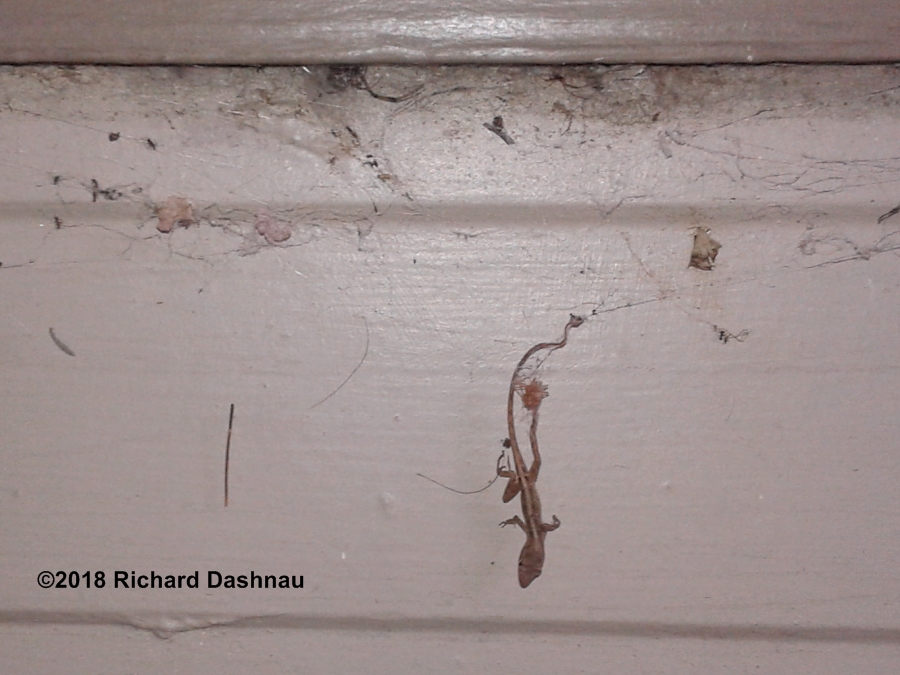 -
-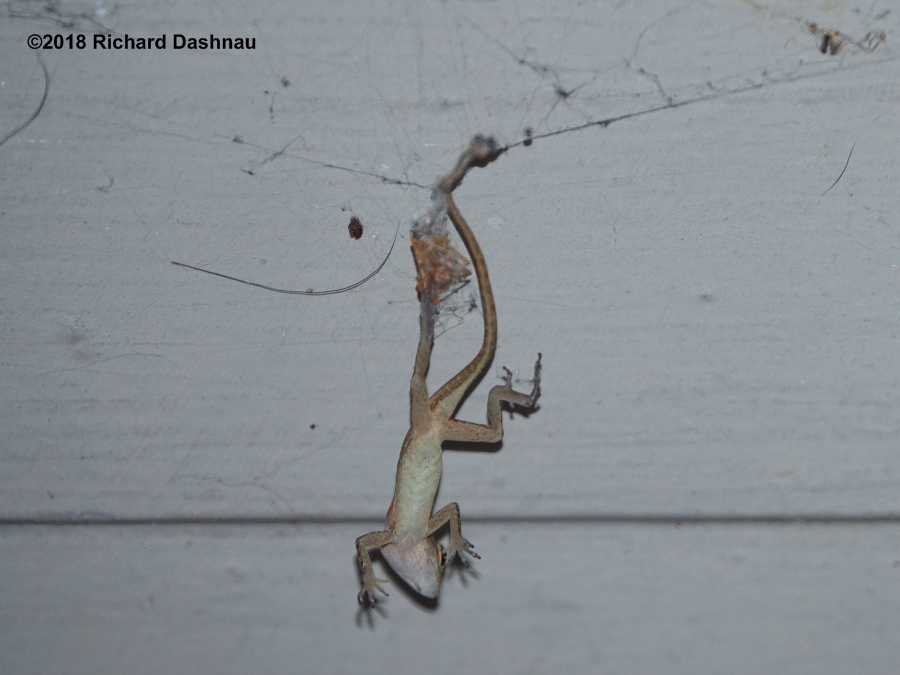 -
-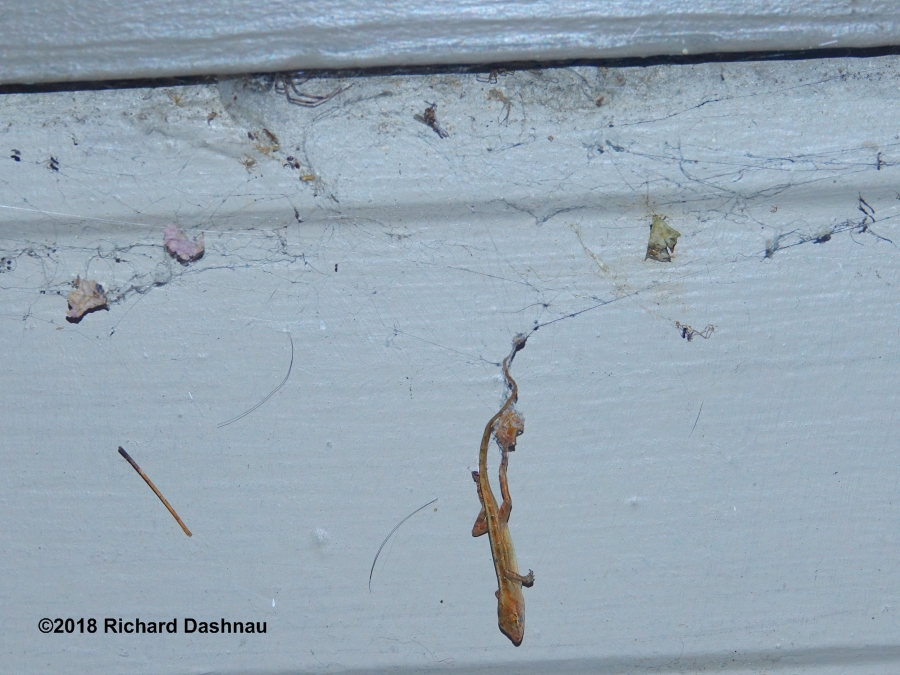 -
-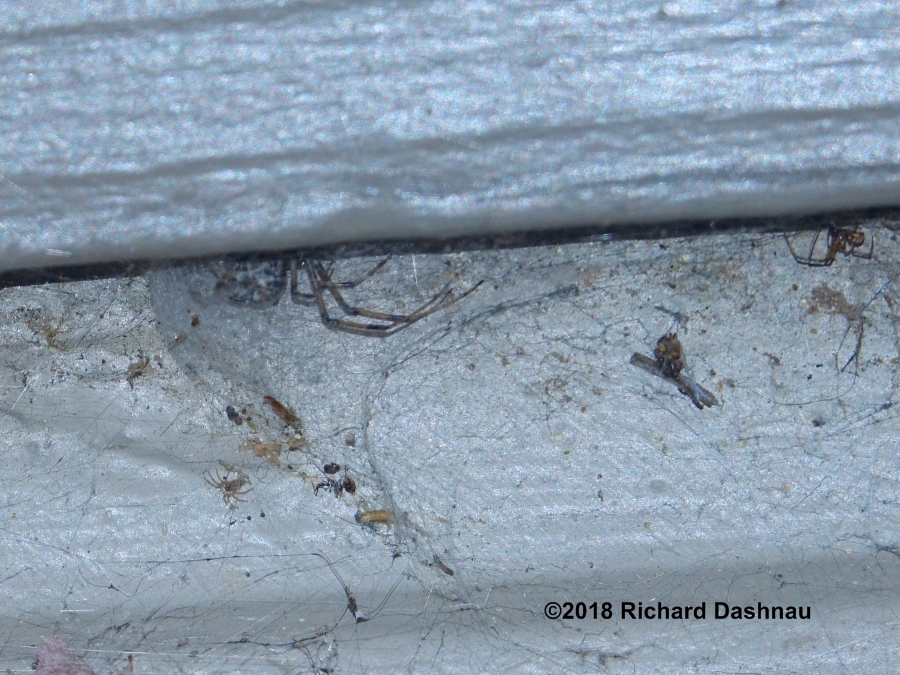 -
-
Lizard caught in the "snare" web. Spider is above and near
center. (08/09/2018)
Closeup of the spider. (08/09/2018)
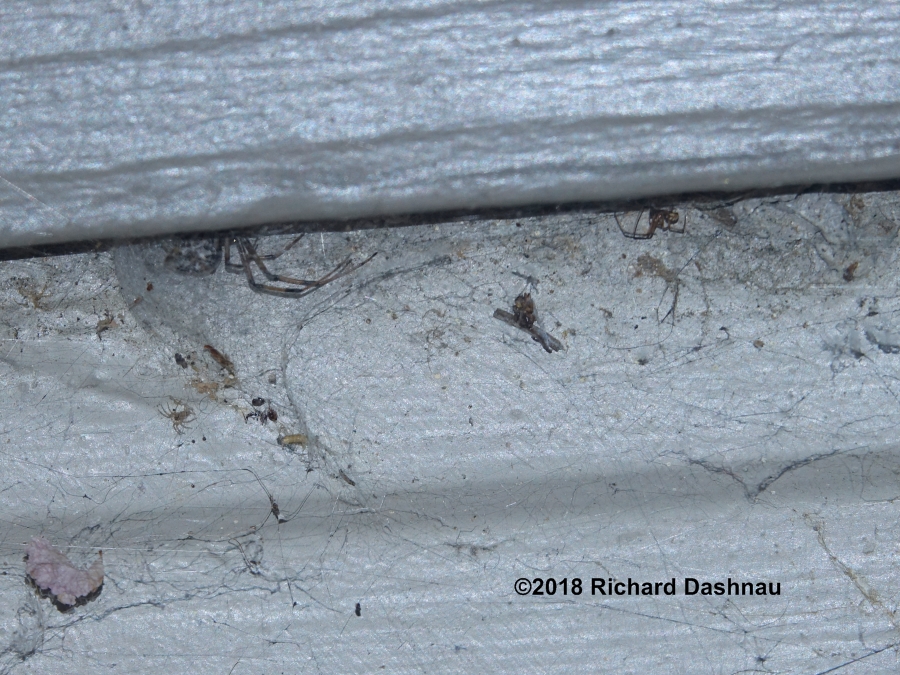 -
-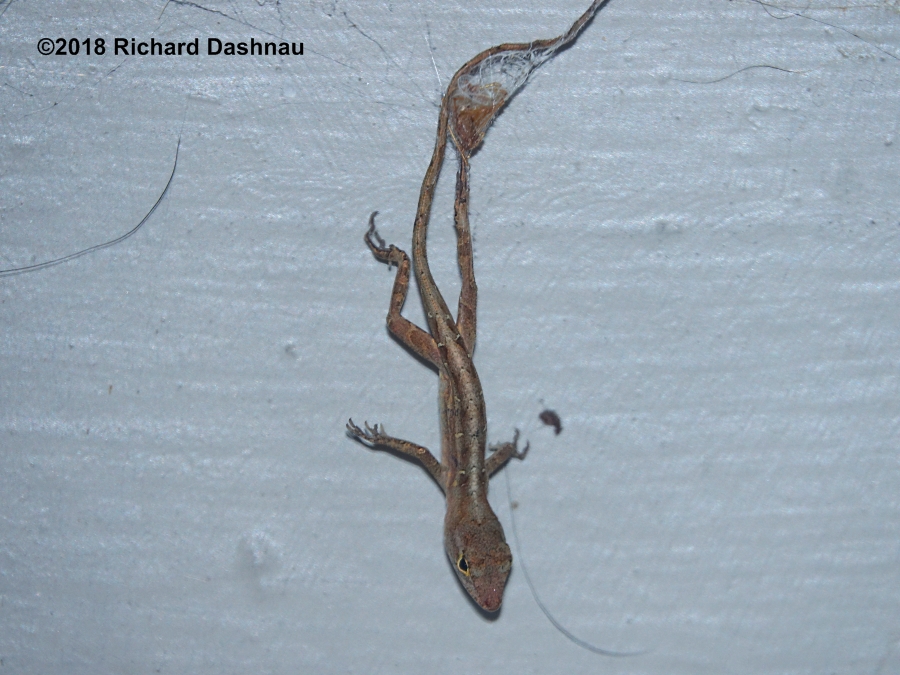 -
-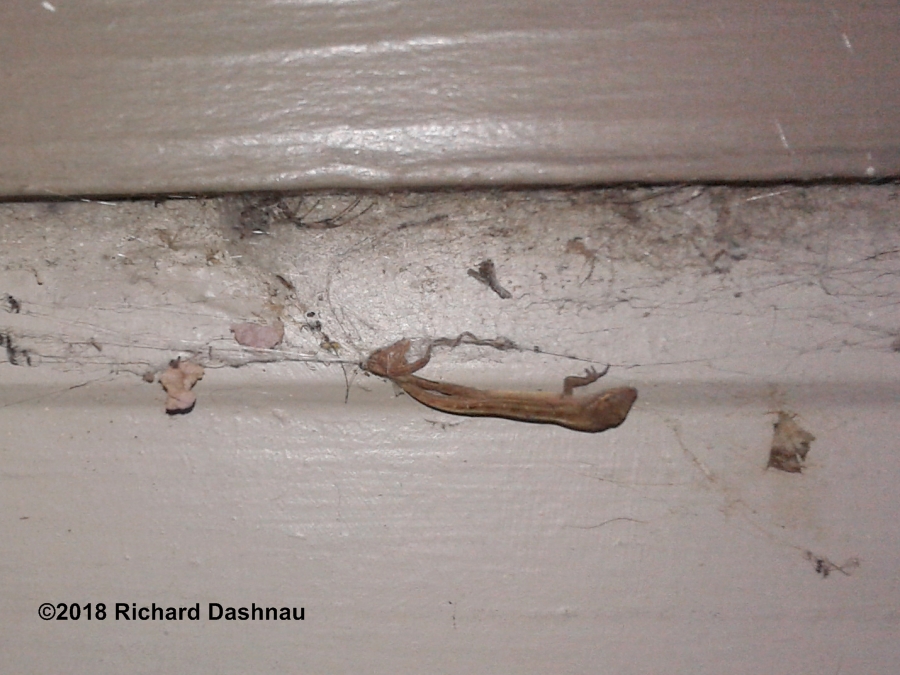 -
-
(08/09/2018)
Next morning (08/10/2018)
That afternoon (08/10/2018). Lizard looks worse.
August 14, 2018 I tried again over
the next few days, I could see the spider, but not very well.
But a lizard was still there. But I
think it's a different lizard than before! The head
looks larger.
So
this records at least two lizards that had been caught!
I checked
on the lizard carcass in the web 2 days later (8/16). I went out
before
sunrise and the spider was out; but I scared it when I
tried
to light
it with the phone light. Still no luck. But during all this
observation, I learned that the spider seems to be more active
at
night. Once the sun started to show any light at all, the
spider
retired for the day. When I tried on 8/17/2018--I finally got my
pictures! And what a surprise! There
was an orange hourglass-shape under the spider. Because of the
color of the
spider
(not black) and the hourglass; I could identify this as a Brown Widow
Spider (Latrodectus geometricus). Because of body shape, I think it
was a
male.
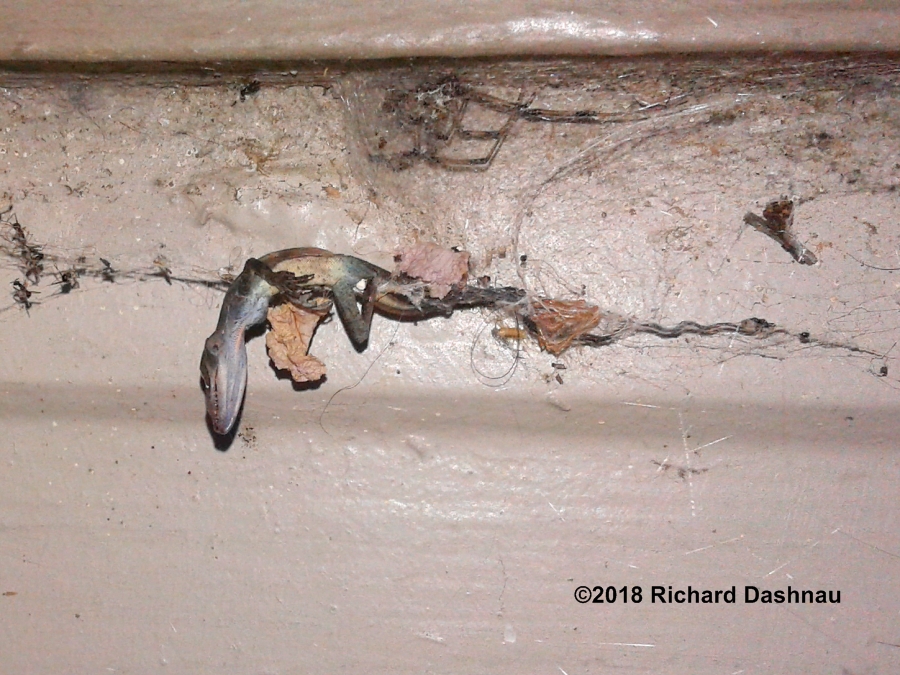 -
-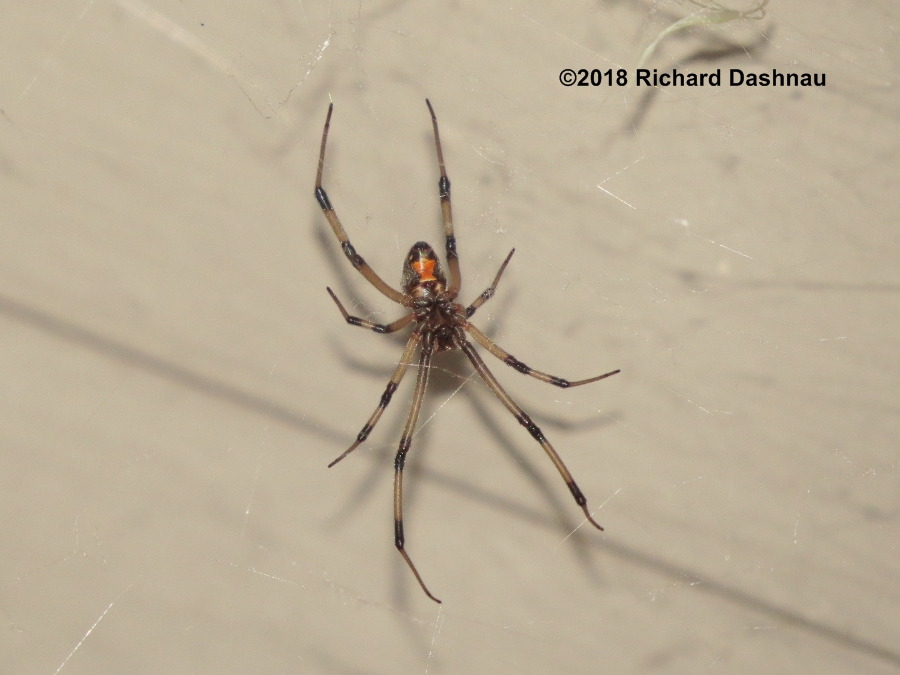 -
-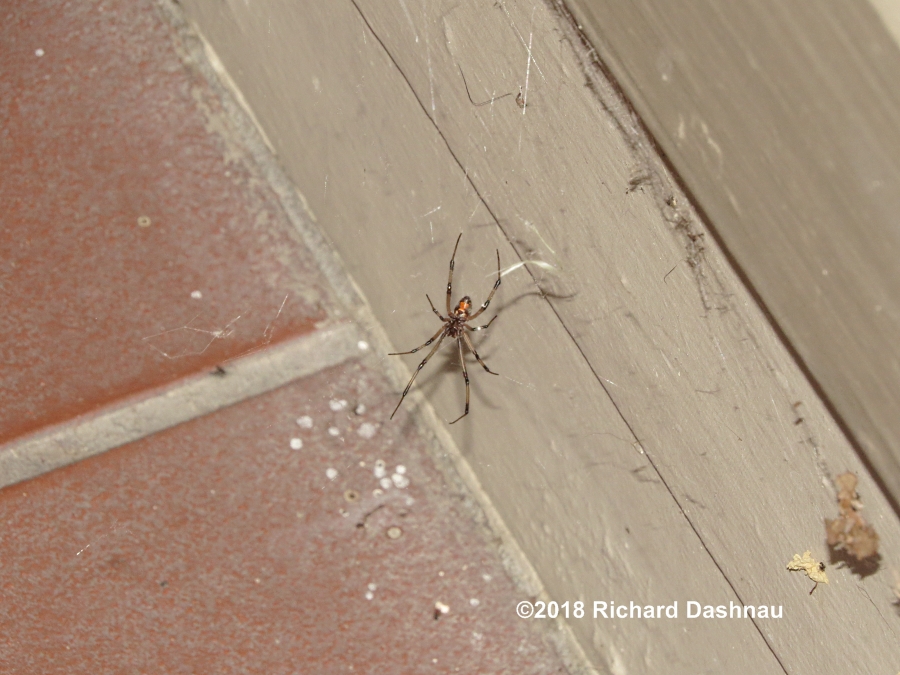 -
-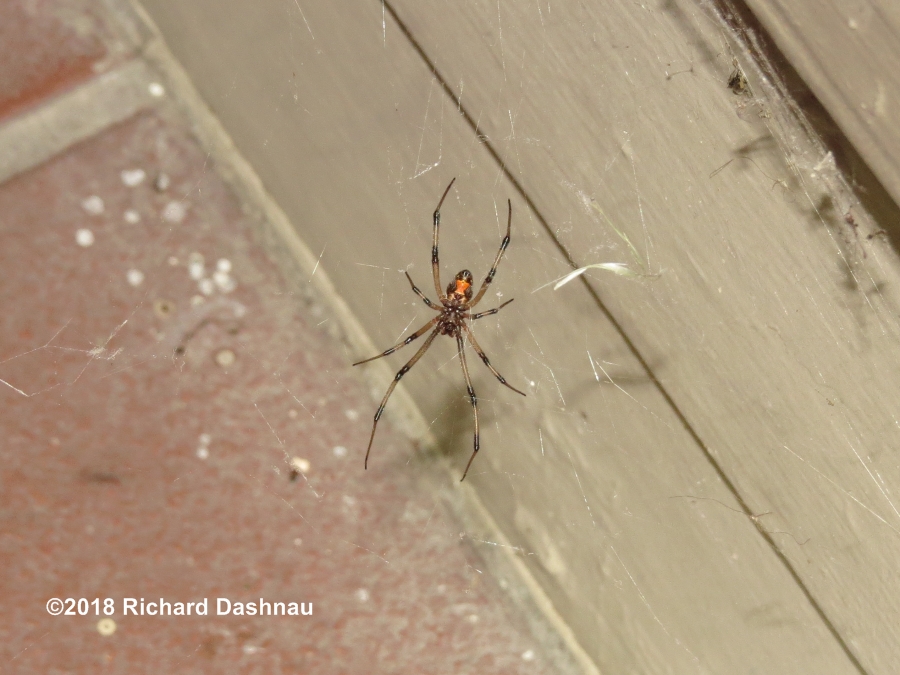
(08/14/2018).
Same web, different lizard! Brown Widow (08/17/2018)
This was how I saw it from above. It was only about
12 inches off the ground. (08/17/2018)
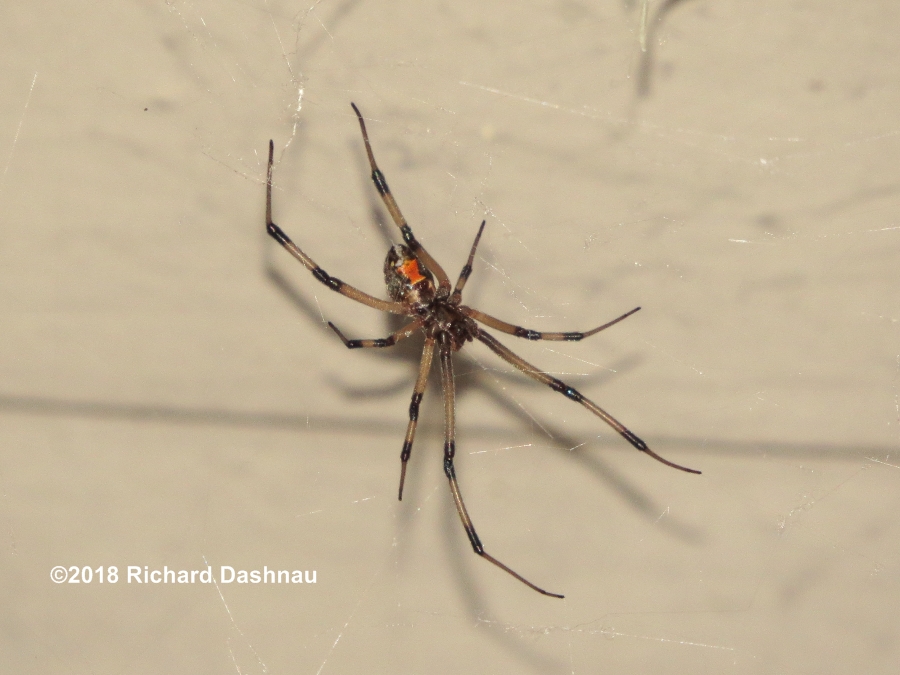 -
-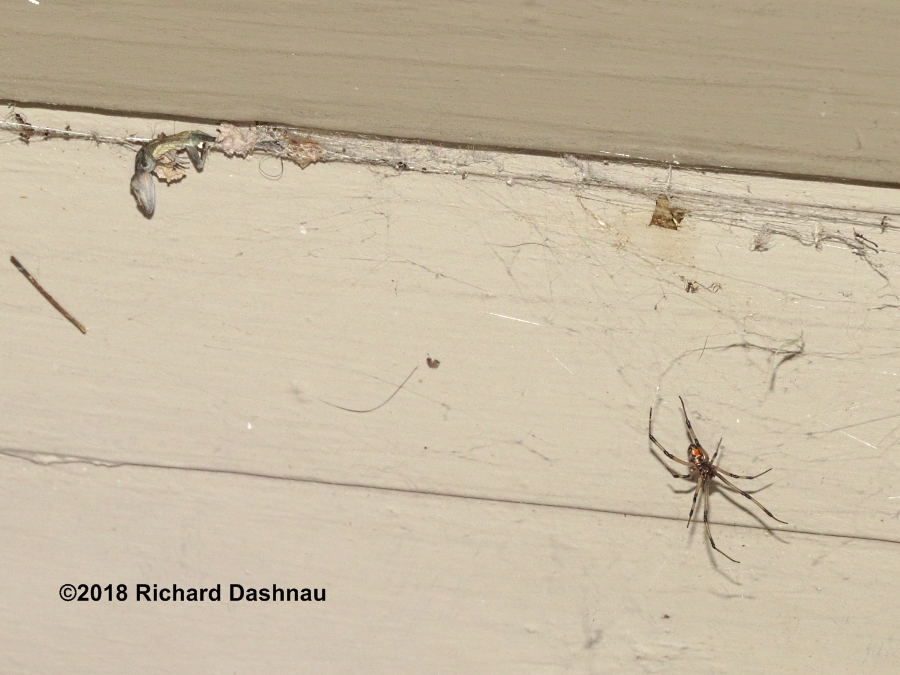 --
--
Here's where it was relative to the lizard. (08/17/2018)
August 25, 2018 I
continued checking on the web between my rehab/walk sessions. On
8/25,
I got a shot of a female there, along with her red marking.
This
last batch of pictures were
taken through 8/31/2018. On
8/29, she'd caught a large insect. On 8/30, I got a few
shots of
both the male and female. 8/31 got a good shot
that
shows the edge of her abdominal marking
from the side while she rested.
This was near the end of my month of recovery/rehab, and I had
to
return to work. So I lost track of what happened after.
Still,
very nice first contact with one
of my neighbors!
-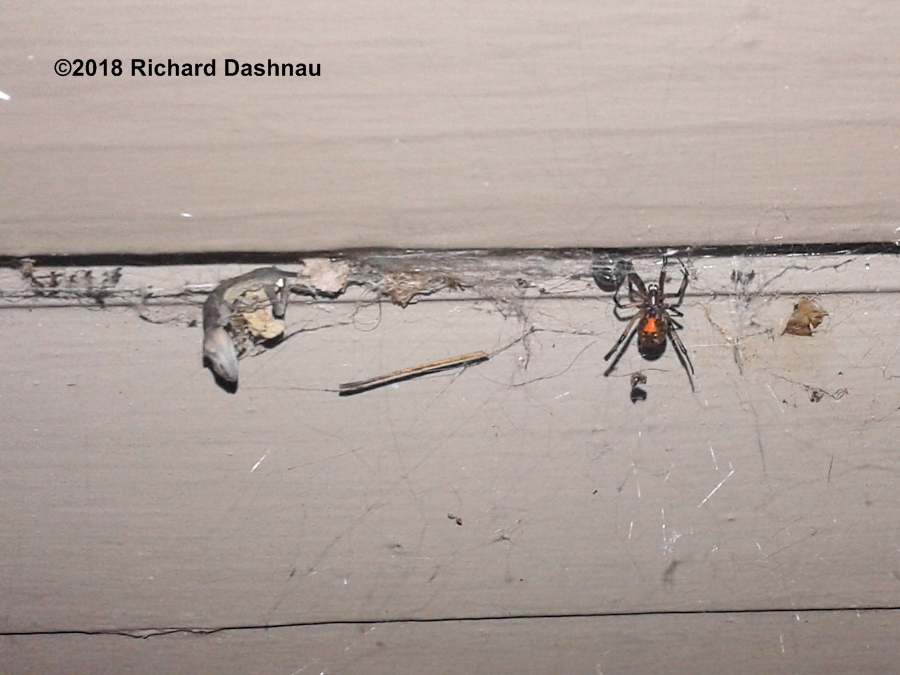 -
-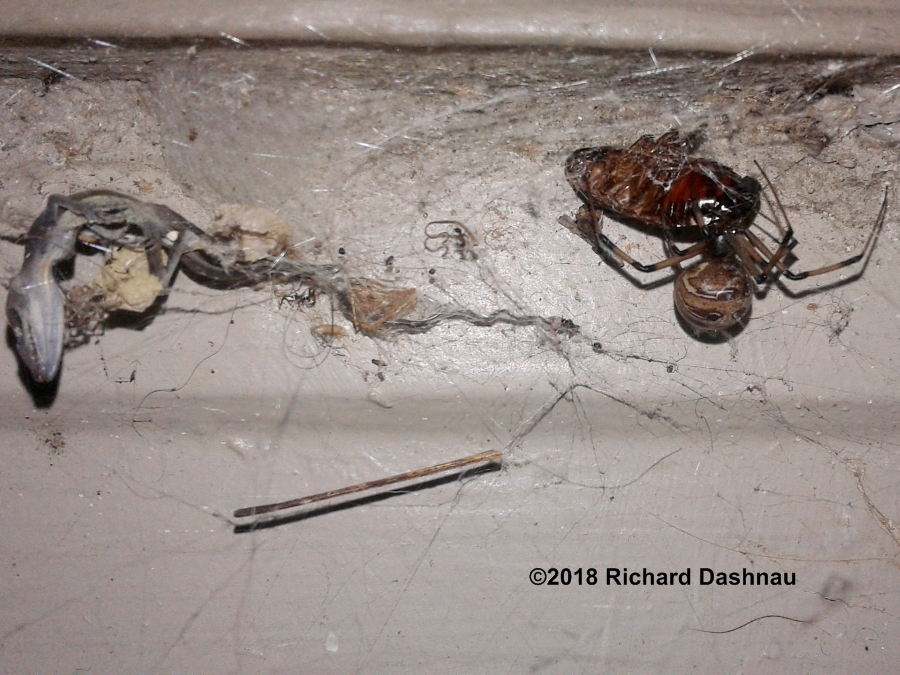
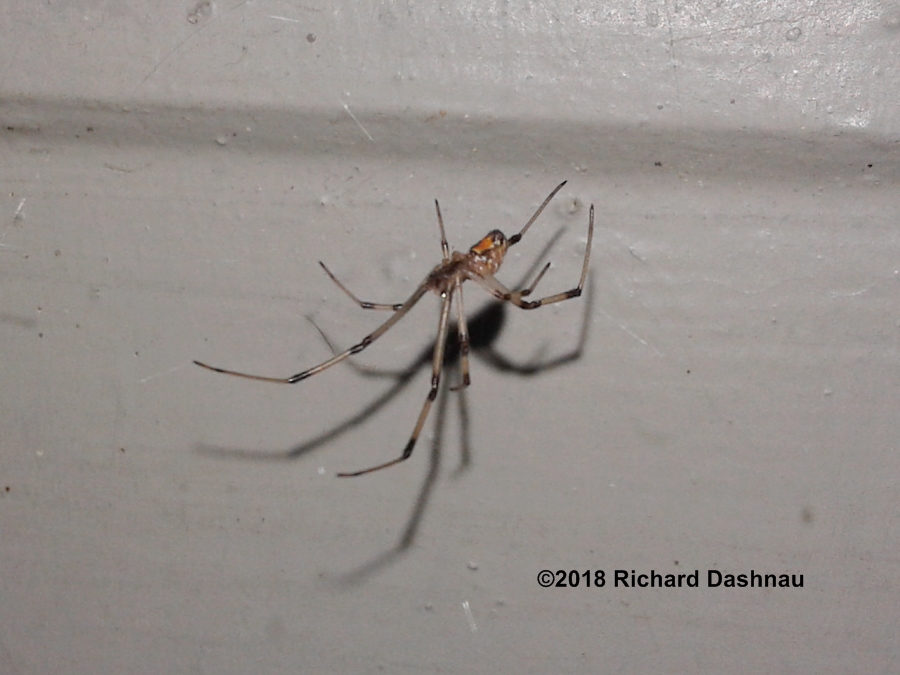 -
-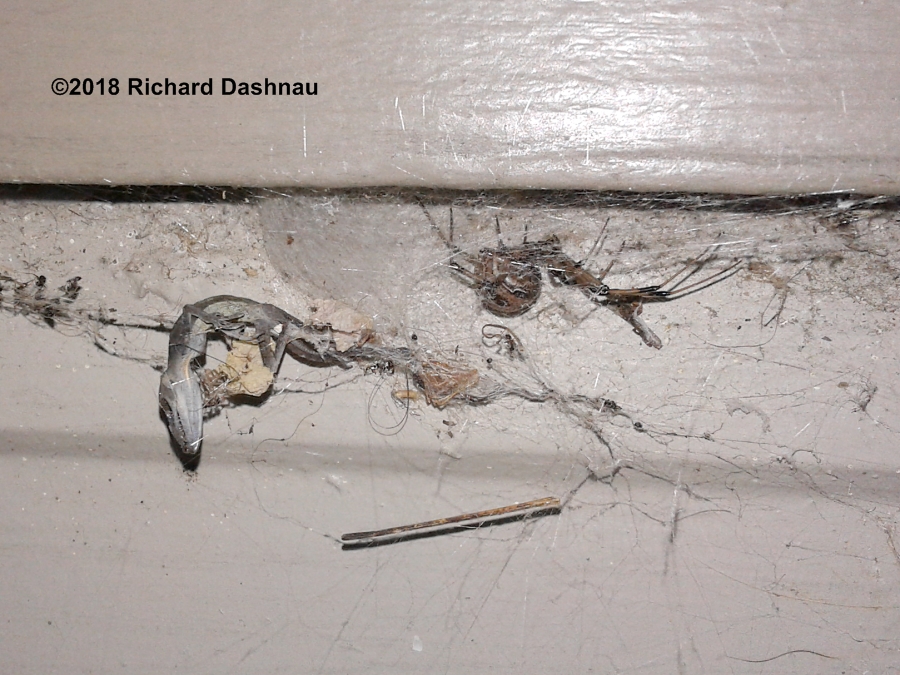
Female with dried
lizard carcass. (08/25/2018) Female
with big insect. (08/29/2018)
Male
in web. (08/30/2018)
(08/30/2018)
--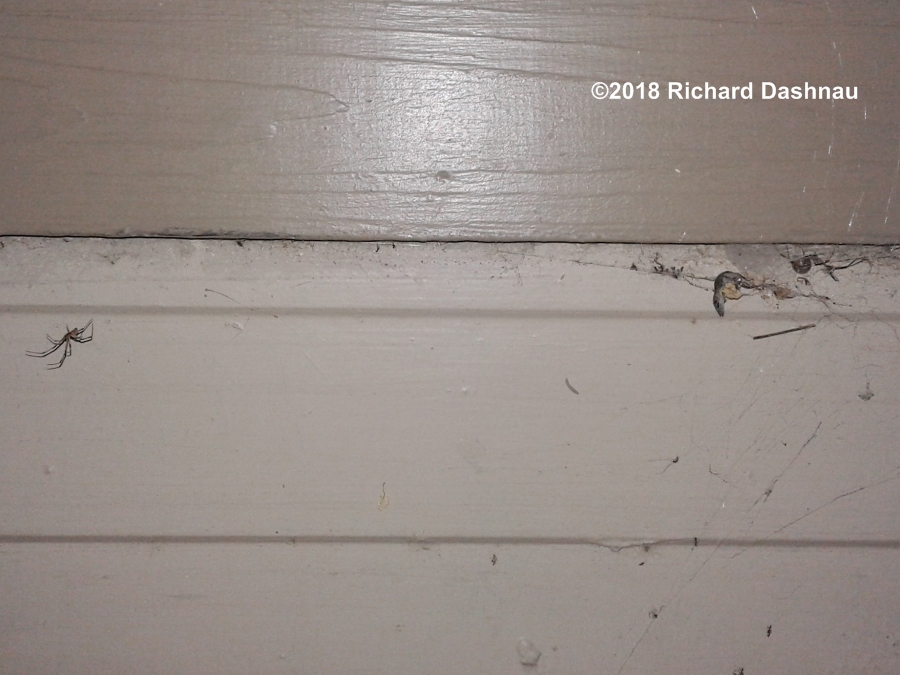 -
-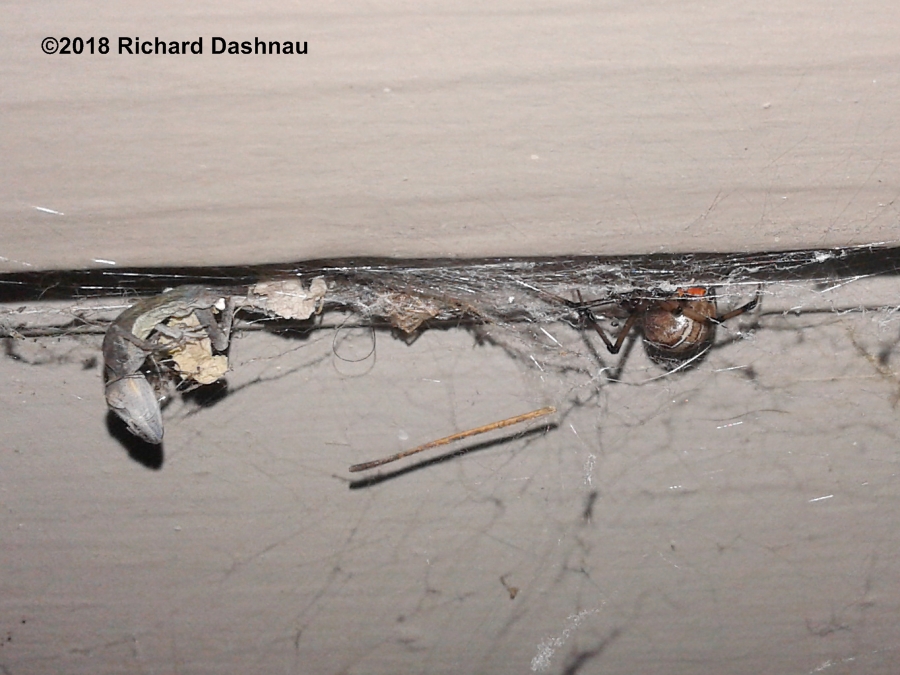 -
-
-
Female and Male.
(08/30/2018)
Female near old carcass
(08/30/2018)
Brown
Widow spiders (Latrodectus geometricus) are venomous, but
according to
various sources, their bite is not as dangerous as that of their
cousin, Black Widow spider (Latrodectus nactans).
( Biology of Spiders, 3rd edition �2011 page 56).
If you'd like to know
more about the park follow these links:
Brazos
Bend
State Park The main
page.
Brazos
Bend
State Park Volunteer's Page The
volunteer's
main page.
Click
on this image 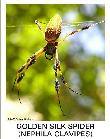 to see a flv video movie (942kb) of a series of 9 11 x 14
posters
I'm working on.
to see a flv video movie (942kb) of a series of 9 11 x 14
posters
I'm working on.
Go
back to my home page, Welcome
to rickubis.com
Go
back
to the RICKUBISCAM
page.
Go
back
to the See the
World
page.
 -
- -
- -
- -
-








 -
-


 -
- -
-